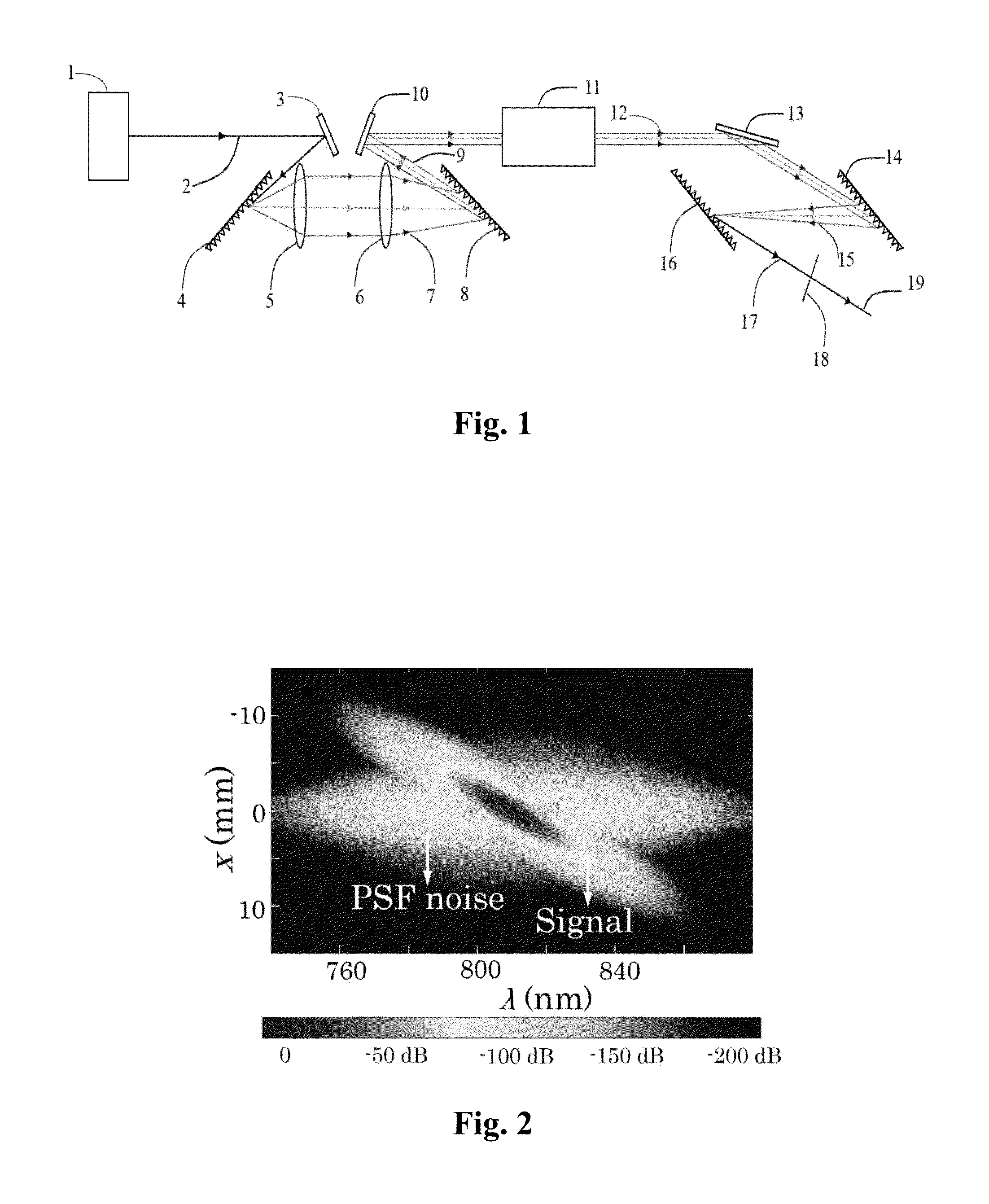Method for filtering noises in optical parametric chirped-pulse amplifier and device therefor
a technology of optical parametric chirped-pulse amplifier and filtering method, which is applied in the field of ultra-short laser amplification, can solve the problems of difficult filtering noise that grows during amplification, bottlenecks, and difficulty in enhancing contrast, and achieves poor temporal contrast
- Summary
- Abstract
- Description
- Claims
- Application Information
AI Technical Summary
Benefits of technology
Problems solved by technology
Method used
Image
Examples
Embodiment Construction
[0026]The present invention is further described according to a group of numerical simulation results.
[0027]FIG. 1 shows a schematic view of a device using a method of spatial-chirp-dressed seed beam and near-filed noise filtering in an optical parametric chirped-pulse amplifier. The method comprises steps of: generating a seed beam dressed with spatial chirp, conducting optical parametric amplification, removing temporal and spatial chirp, and filtering noise in spatial domain.
[0028]Ultrashort seed pulse 2 emitted by ultrashort pulsed-laser source 1 is reflected by first reflector 3 to first grating in stretcher 4. After being diffracted by first grating in stretcher 4, ultrashort seed pulse 2 acquires an angular dispersion. Group-velocity dispersion is introduced when the pulse propagates away from first grating in stretcher 4 and transit-time dispersion increases with the propagation. When the desired dispersion is achieved after the pulse passing through first imaging lens 5 and...
PUM
| Property | Measurement | Unit |
|---|---|---|
| energy | aaaaa | aaaaa |
| transmittance | aaaaa | aaaaa |
| peak-power | aaaaa | aaaaa |
Abstract
Description
Claims
Application Information
 Login to View More
Login to View More - R&D
- Intellectual Property
- Life Sciences
- Materials
- Tech Scout
- Unparalleled Data Quality
- Higher Quality Content
- 60% Fewer Hallucinations
Browse by: Latest US Patents, China's latest patents, Technical Efficacy Thesaurus, Application Domain, Technology Topic, Popular Technical Reports.
© 2025 PatSnap. All rights reserved.Legal|Privacy policy|Modern Slavery Act Transparency Statement|Sitemap|About US| Contact US: help@patsnap.com



